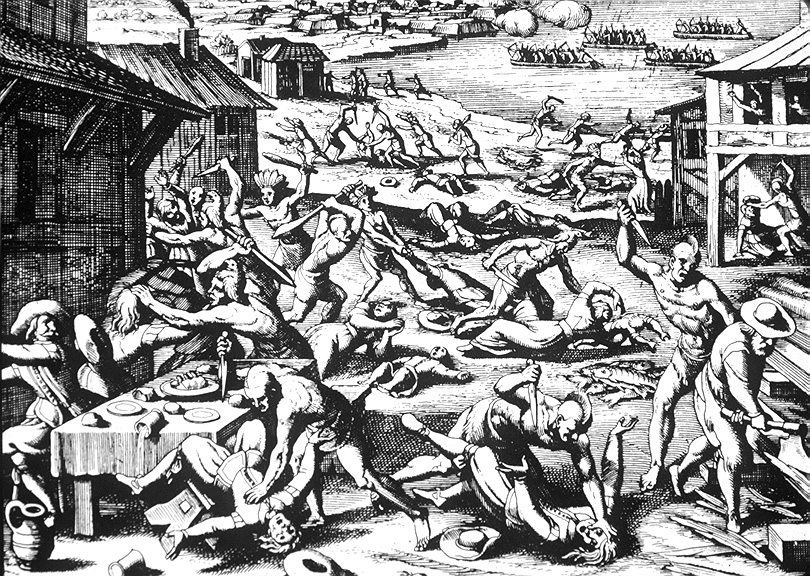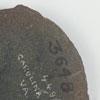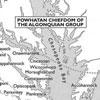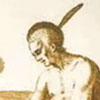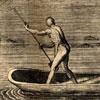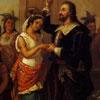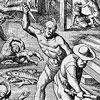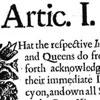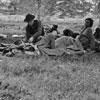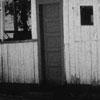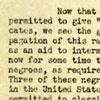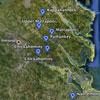One of Powhatan’s brothers, Opechancanough, took control of the paramount chiefdom after Powhatan’s death. English expansion into Virginia Indian lands again increased, and Opechancanough petitioned the General Assembly for help. The Assembly agreed, but did not effectively limit settler’s incursions onto Virginia Indian land.
Opechancanough and other Indian leaders decided to take action. On the morning of March 22, 1622, warriors from 12 of the Powhatan paramount chiefdoms launched a well-coordinated attack on English settlements along the James River. This attack killed about 350 Europeans, but it failed to drive the English from Virginia. As you examine this woodcut, published in 1628 in a book alongside Theodore de Bry’s earlier engravings, consider whose perspective it represents.
This woodcut is believed to be from the artist’s imagination and it represents the English perspective in response to the attack. During the months following the attack, English militia destroyed Indian fishing weirs, cornfields, and towns. The English killed more American Indians in those months than they had in all previous attacks. Conflict continued until a new peace treaty in 1632 ended outright hostility for a time.
By 1669, ravaged by war and disease, the American Indian population in Virginia had decreased to about 3,000 people. The English had established a productive colony in Virginia, at the cost of thousands of lives and a native culture significantly changed.
Source: Matthaeus Merian, “[Attack of 1622],” engraving, 1628, in Mary Miley Theobald, “The Tyme Appointed: The Colonial Williamsburg Official History Site,” Colonial Williamsburg: CW Journal, Autumn 2005, accessed September 17, 2011. Image retrieved from “File:1622 massacre jamestown de Bry.jpg,” Wikipedia.


